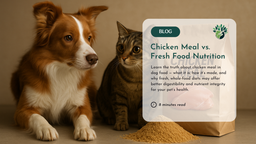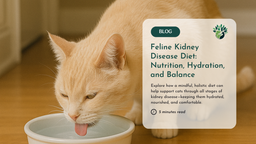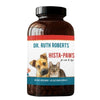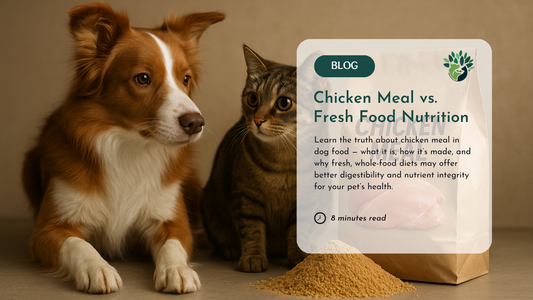Fatty liver disease in cats, or hepatic lipidosis, can occur when a cat stops eating or loses weight too quickly. Symptoms such as lethargy, vomiting, and yellowing of the skin and eyes are critical warning signs.
This guide covers the symptoms, causes, and treatments of fatty liver disease in cats, including practical tips for managing the condition at home.
What is Fatty Liver Disease in Cats?
Fatty liver disease, also called Feline Hepatic Lipidosis, is a severe liver disorder caused by excess fat accumulation in the liver cells. This build-up prevents the liver from performing essential tasks like detoxifying the body, producing bile, and processing nutrients. Cats are particularly vulnerable due to their unique metabolic response to fasting.
The Impact of Fatty Liver Disease on Liver Function
The liver plays a vital role in maintaining overall health. When overwhelmed by fat, it struggles to function properly, leading to various complications, such as:
- Intrahepatic Cholestasis: Impaired bile flow causes jaundice (yellowing of the skin, gums, and eyes).
- Detoxification Failure: Toxin build-up in the bloodstream can lead to severe neurological issues, like hepatic encephalopathy.
- Protein and Nutrient Imbalances: The liver’s reduced ability to process nutrients and produce proteins weakens the body.
The Causes of Fatty Liver Disease in Cats
Fatty liver disease results from three interconnected factors: obesity, anorexia, and stress. Together, they overwhelm the liver with fat, leading to damage and dysfunction.
-
Obesity as the Foundation
Overweight cats are at higher risk due to excess stored fat. When their food intake drops, the body mobilizes fat reserves for energy. This rapid fat release can overwhelm the liver, causing fat deposits to build up in liver cells.
-
Anorexia as a Trigger
Loss of appetite, or anorexia, is a significant trigger for hepatic lipidosis. Even short periods of fasting can result in rapid weight loss in cats. Studies show that losing 25–40% of body weight quickly can flood the liver with fatty acids, leading to fat accumulation and impaired function.
-
Stress as an Indirect Contributor
Stress often contributes to pseudo-anorexia, where a cat eats less or stops eating entirely. Situational changes—such as moving, new pets, or disruptions in routine—can exacerbate the problem. Stress can also worsen underlying health conditions, further reducing appetite and increasing the risk of fatty liver disease.
Symptoms of Fatty Liver Disease in Cats
Early detection of fatty liver disease is crucial. Look out for these common symptoms:
-
Weight Loss
Rapid weight loss, especially in overweight cats, is a primary indicator. -
Jaundice
Yellowing of the skin, gums, and eyes caused by bile build-up in the blood. -
Vomiting, Lethargy, and Dehydration
Cats may appear weak, unresponsive, and dehydrated, worsening their condition. -
Behavioral Changes
Reduced activity, reluctance to move, and noticeable weakness are signs of liver dysfunction.
Home Treatment for Fatty Liver Disease in Cats
Addressing fatty liver disease requires proper nutrition, hydration, stress reduction, and veterinary guidance.
1. Nutritional Support with Homemade Food
A balanced, homemade diet like The Original CrockPet Diet ensures high-quality nutrients that support liver health. Key ingredients include:
- High-Quality Proteins: Lean chicken, turkey, white fish, or eggs are digestible options that help maintain muscle mass.
- Healthy Carbohydrates: White rice, oatmeal, or sweet potatoes provide energy without overburdening the liver.
- Fibre-Rich Vegetables: Lightly cooked carrots, zucchini, or green beans aid digestion and overall health.
- Healthy Fats: Omega-3 fatty acids from fish or flaxseed oil reduce inflammation and support recovery.
2. Supplementation
Supplements play a vital role in liver recovery. Recommended options include:
- Taurine: Supports bile production and liver health.
- L-Carnitine: Assists fat metabolism, reducing liver fat build-up.
- Milk Thistle: Provides antioxidants and promotes liver cell repair.
- Omega-3 Fatty Acids: Reduce inflammation and support fat processing.
- B Complex Vitamins: Restore energy and address deficiencies caused by reduced appetite.
For a more comprehensive approach to liver health, visit our Liver Detox Protocol, which helps support detoxification and overall liver function.
3. Hydration and Digestive Support
Dehydration worsens liver function. Homemade, salt-free bone broth provides hydration and essential nutrients, aiding recovery.
4. Creating a Stress-Free Environment
Minimize stress by providing a quiet, secure space for your cat. Stick to a consistent feeding and care schedule to help restore appetite and reduce anxiety.
5. Monitoring and Veterinary Guidance
Regularly monitor your cat’s weight, appetite, and behavior. Work with your veterinarian to adjust treatment and diet as needed.
Conclusion
Fatty liver disease in cats is a serious but manageable condition. Prompt veterinary care, a nutrient-rich homemade diet, and proper supplements can aid recovery. By addressing the root causes and symptoms early, you can help your cat regain health and thrive.
















